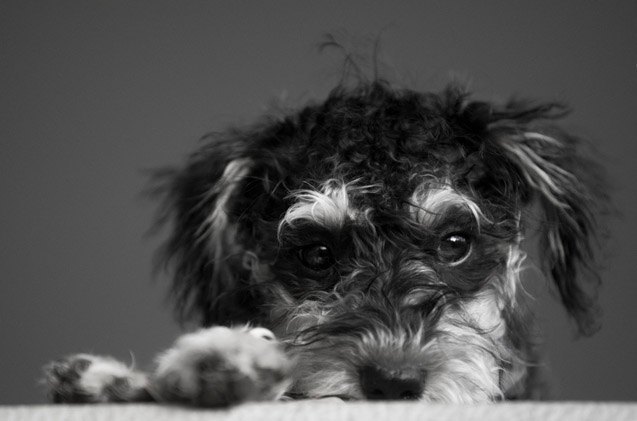Schipper-Poo


About Schipper-Poo
The mischievous little Schipper-Poo is a playful combination of the loving, intelligent Poodle and the loyal, energetic Schipperke. This friendly pooch gets along with kids, other pets and even strangers for a wonderful, non-watchdog addition to the family.
The playful Schipper-Poo brings the loving personality of the Poodle together with the energy of the Schipperke.
Schipper-Poos originate from the Designer Dog trend that began back in the 1980s when breeders began to mix and match 2 different pure-bred dogs to produce pups with ideal traits from each. Such as smaller, gentler or hypo-allergenic and typically free from the health issues of the parent breeds.
The Schipper-Poo is the offspring of two different purebreds so he doesn’t qualify to join the coveted American Kennel Club (AKC) however each parent breed has been a member for more than a century; the Poodle joined AKCs “sporting” group in 1887 while the Schipperke was named to the same group in 1904.
The Schipper-Poo is a playful and friendly dog that does well with kids and other pets.
The Schipper-Poo is a medium-sized dog with a high tendency to become obese so his food should reflect this as well as his size, age and activity level. Because Poodles can be prone to digestive issues, opt for a low-fat food that is nutrient-rich and free from fillers (carbs) that may cause him to want to over-eat to feel full. Plan to feed this dog 2 to 3 smaller meals each day versus free-feeding.
While the Schipper-Poo is the offspring of two intelligent and easy-to-train breeds, a stubborn streak can make him a challenge when it comes to obeying commands. Patience, coupled with a firm, consistent approach will go a long way in getting results. Rewards such as treats and lots of verbal praise are what this pooch responds to best.
Your Schipper-Poo will likely weigh in the range of 20 to 40 pounds once he reaches adulthood.
The Schipper-Poo is a playful and friendly dog that does well with kids and other pets. Because he rarely barks he isn’t watchdog material however this makes him an ideal pick for apartment dwellers. He thrives on human companionship and can become mischievous when left to his own devices. He is considered happy, loving, energetic and loyal.
While designer dogs are typically healthy and free of many of the health issues experienced by their purebred parents, one should always know what their new pup could inherit. With the Schipper-Poo that can include joint and digestive issues as well as a progressive neurological disease known as Mucopolysaccharidosis Type IIIB
The average life span of a Schipper-Poo is 12 to 15 years.
While the Schipper-Poo is an active dog, he isn’t overly energetic and can quite happily get by with a good daily walk and some interactive playtime. Because he has a tendency to take off chasing small animals, leashing is recommended when he is not in an enclosed area. Tossing a ball or Frisbee in his yard of a dog park are a great addition to his regimen.
The friendly, playful Schipper-Poo thrives on human companionship.
Also known as the Schipper-Doodle, Schipperkepoo and Schipperkedoodle, the Schipper-Poo doesn’t qualify to join the American Kennel Club’s roster of purebred dogs however he is recognized by the Designer Breed Registry (DBR), American Canine Hybrid Club (ACHC), Designer Dogs Kennel Club (DDKC), Dog Registry of America, Inc.(DRA) and IDCR = International Designer Canine Registry.
The Schipper-Poo’s coat is typically short, soft and wavy or curly like the Poodle. He is considered a low- to moderate shedding dog dependant on which side of the gene pool is predominant. Either way, a light brushing 4 to 5 times per week will be sufficient to keep his fur from matting and tangling with bathing only as needed. His Poodle lineage may require a visit to the groomer every few months to keep his coat looking its best and because he is a floppy eared dog, weekly cleaning is a must to prevent infection.
Schipper-Poo puppies can grow into stubborn little dogs that need a little extra guidance when it comes to behaving. Plan to socialize your pup immediately and obedience train as soon as he is able to walk on a lead. Because this dog can be susceptible to a neurological disorder called Mucopolysaccharidosis Type IIIB, ask your breeder to provide a DNA test to verify the Schipperke parent was clear.
Photo credit: Mary Swift/Shutterstock; Michael Rowlandson/Shutterstock

Sharing space with three seriously judgy Schnoodles and a feline who prefers to be left alone. #LivingMyBestLife
More by Mary Simpson

























